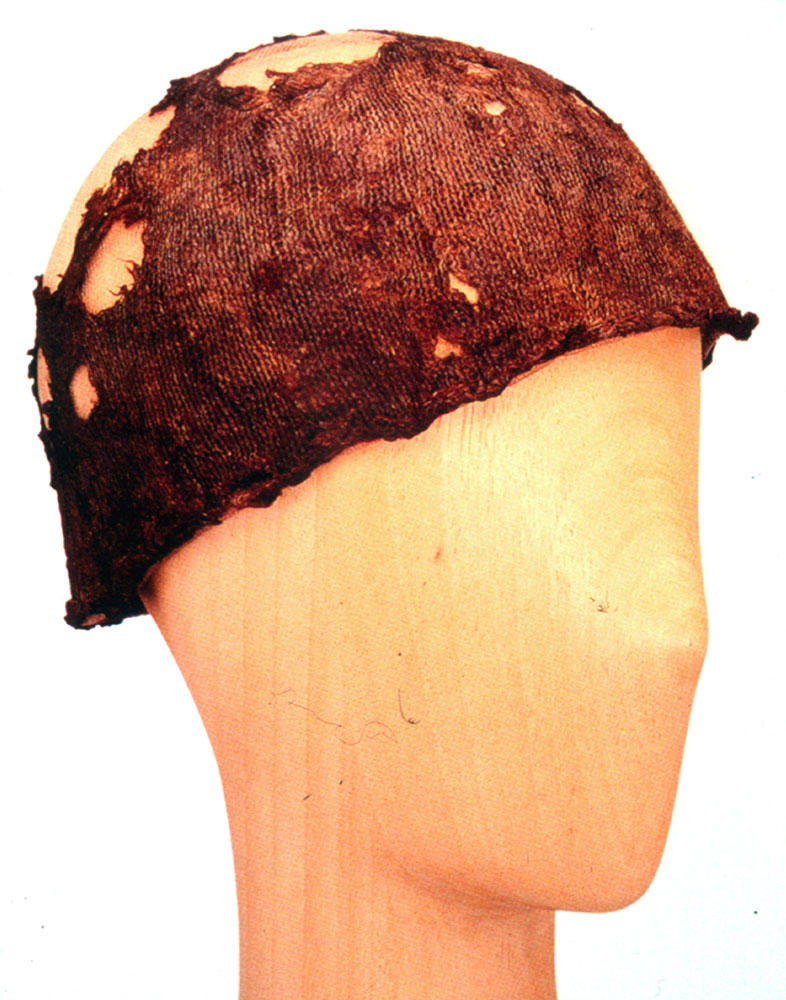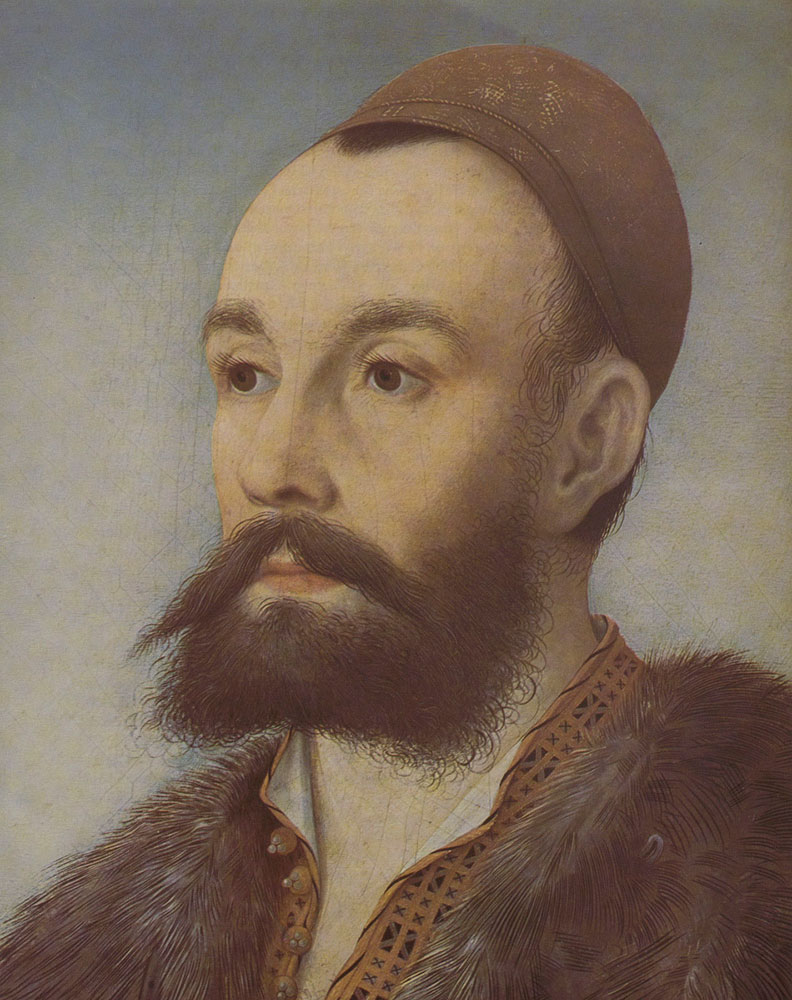Knitted cap, 14th c.
Knitted cap, early 14th century, origin unknown. F-Saint Denis, Musée d’Art et d’Histoire, Unité d’Archéologie, inventory 11,218,163 (MS inventory 11).
Sea silk, plain right knit ‘en jersey avec les filets retors S de deux bouts Z’, Ø 18 cm, damaged.
The Basilica of Saint-Denis, located north of Paris, has been the burial place of the French kings since the 10th century. During archaeological excavations in the quarter of the basilica, an indefinable textile fragment was found in 1978, in a dépotoire, a kind of waste pit. Based on further finds, it was dated to the beginning of the 14th century.
The microscopic analysis of the material was carried out by Mme Naomi Moore at the Centre National de la Recherche Scientifique CNRS in Paris. The comparative material was provided by the Musée Océanographique Monaco, which owns several objects made of sea silk.
Archaeological textile finds are extremely rare; even rarer are knitted textiles from the Middle Ages. Until the 14th century, only the so-called needle-binding was probably known, which is – at first glance – difficult to distinguish from knitted textiles.
This cap is therefore an extraordinary object in two respects: It is still the oldest surviving object made of sea silk, and the material proof that sea silk was processed at least in the late Middle Ages. It is also probably one of the oldest knitted objects.



